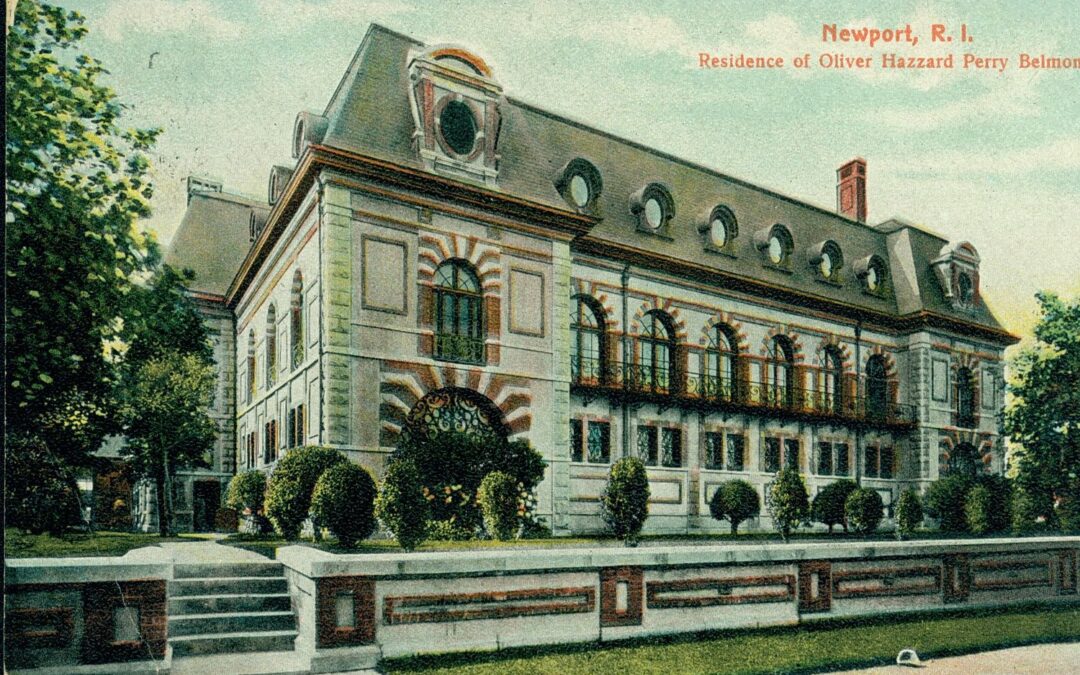For the majority of the great houses designed and built along Bellevue Avenue, the carriage house and stables were usually located a distance from the main house. Even at the Elms, with its high-style carriage house design, in the same style as the main house, the main building is largely hidden from view. However, there is one exception where the horses and carriages were not only integrated into the house, but were actually the focus and purpose of the original design. That house is, of course, Belcourt.
Belcourt was originally commissioned by Oliver Hazard Perry Belmont in 1891. Belmont was a devoted equestrian, founder of the Belmont Stakes, and a bachelor sportsman. The house was designed by Richard Morris Hunt, who also did Marble House and The Breakers, in the style of a French medieval hunting lodge. In a break with convention, the ground level housed the stables and tack room, with the ballroom and single master bedroom directly above. In a way, this magnificent mansion was built to be a one-bedroom home, not counting servants’ rooms, and maybe one of the most extraordinary “bachelor pads” ever built.
When Alva Smith Vanderbilt and her first husband, William K. Vanderbilt (who had commissioned Marble House as a gift for Alva) divorced, she was drawn to Vanderbilt’s close friend, Oliver Belmont. In 1896, they were married and Belmont presented Belcourt to Alva as a wedding present. Under her direction, major changes were undertaken. The stables were relocated out of the main residence and a large area for dining and entertaining was created. Amazingly, she also continued to own and use Marble House for entertaining and social purposes for more than 20 years, until she relocated to Europe following Belmont’s death. After the end of the Gilded Age, the house went through a number of owners, slowly becoming more and more derelict. In 1956, the Tinney family purchased the building and rechristened it “Belcourt Castle.” The house became a repository of objects d’art that the family collected from around the world. To finance the maintenance of the house, it was opened for weddings, events, and tours. In 2012, the house was sold to Caroline Rafaelian, the founder of Alex and Ani, and it has been under restoration ever since.
Newport is fortunate that there are people with the resources and interest available to create, preserve and eventually rebuild these grand homes and keep them intact, as part of Newport’s grand architectural heritage.

Looking to remodel your home? Let’s connect.
Join the Architectural Forum to stay up-to-date with architectural news from Rhode Island and abroad.
